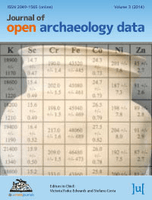
Journal of Open Archaeology Data
Scope & Guideline
Empowering Archaeology Through Open Access.
Introduction
Aims and Scopes
- Open Data Dissemination:
The journal is dedicated to the publication of open datasets from archaeological research, promoting transparency and accessibility in the field. - Interdisciplinary Collaboration:
It emphasizes collaboration across different disciplines, integrating methodologies from archaeology, anthropology, history, and environmental science. - Focus on Technological Innovation:
The journal highlights the use of modern technologies such as GIS, 3D scanning, and machine learning in archaeological research, showcasing innovative approaches to data collection and analysis. - Global Archaeological Perspectives:
It presents datasets from diverse geographical regions and historical contexts, providing a comprehensive view of archaeological practices and findings worldwide. - Critical Data Analysis:
The journal supports the critical evaluation and synthesis of archaeological datasets, encouraging researchers to engage with existing data and contribute to the scholarly discourse.
Trending and Emerging
- Data-Driven Archaeology:
There is a significant trend towards data-driven archaeology, where the emphasis is placed on the collection, analysis, and interpretation of large datasets, reflecting a shift in how archaeological research is conducted. - Interdisciplinary Datasets:
Emerging themes include interdisciplinary datasets that combine archaeological data with environmental, historical, and social data, fostering a more holistic understanding of past human behaviors. - Use of Digital Tools and Technologies:
The integration of digital tools, such as GIS and machine learning, is becoming increasingly common, allowing for innovative analyses of archaeological data and enhancing the depth of research findings. - Sustainability and Heritage Preservation:
There is growing interest in datasets related to sustainability and the preservation of cultural heritage, addressing contemporary issues such as climate change and its impact on archaeological sites. - Global and Regional Comparative Studies:
The journal is seeing an increase in publications that focus on global and regional comparative analyses, which leverage datasets from various geographical contexts to draw broader archaeological conclusions.
Declining or Waning
- Traditional Excavation Reports:
There has been a decrease in the publication of traditional excavation reports, as the field moves towards more data-centric approaches that emphasize datasets rather than narrative descriptions of excavations. - Localized Studies:
Research focusing solely on localized or site-specific studies has waned, as the journal increasingly favors broader datasets that can inform regional or global archaeological narratives. - Historical Artifact Cataloging:
The frequency of papers dedicated exclusively to cataloging historical artifacts has diminished, with a shift towards integrating such data into larger datasets that support comparative analysis. - Non-Quantitative Analysis:
There is a declining interest in non-quantitative approaches to archaeological data, as the journal increasingly emphasizes quantitative data and statistical analysis. - Case Studies with Limited Data:
The trend of publishing case studies with limited datasets has decreased, as the journal encourages comprehensive datasets that provide more substantial contributions to the field.
Similar Journals
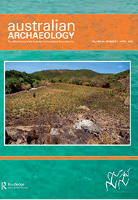
AUSTRALIAN ARCHAEOLOGY
Connecting Scholars to Australia’s Archaeological Narrative.AUSTRAILIAN ARCHAEOLOGY, published by Taylor & Francis Ltd, is a leading academic journal dedicated to the field of archaeology. With a strong reputation as evidenced by its Q1 ranking in both the Arts and Humanities and Social Sciences categories, this journal fosters the growth and dissemination of pioneering research from diverse archaeological contexts. The journal has been a vital resource for scholars and practitioners since its convergence in 2002, supporting the collective advancement of knowledge in the archaeological discipline. By offering a platform for rigorous analysis and critical discussions, AUSTRAILIAN ARCHAEOLOGY appeals to a wide audience, from established researchers to students beginning their journey in archaeology. Although it is not an Open Access journal, the insights provided are invaluable for enhancing understanding and appreciation of Australia’s rich archaeological heritage. With a Scopus ranking that places it among the top contenders in its field, this journal continues to contribute significantly to outstanding archaeological scholarship and professional practice.
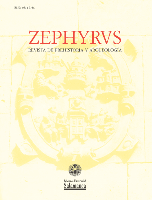
Zephyrus-Revista de Prehistoria y Arqueologia
Championing Cutting-Edge Research in ArchaeologyZephyrus-Revista de Prehistoria y Arqueologia, published by UNIV SALAMANCA, EDICIONES, is a renowned academic journal dedicated to the fields of archaeology and prehistory. Since its inception in 1950, the journal has embraced an Open Access model, facilitating widespread access to cutting-edge research and scholarly discourse while fostering global collaboration among researchers. Based in Salamanca, Spain, this journal has achieved remarkable recognition, evidenced by its Q1 rankings in Archaeology and History as of 2023, and impressive Scopus standings across various categories, including an 83rd percentile in History. The journal's comprehensive scope since 2011 has made it a vital resource for academics seeking to deepen their understanding of human history through archaeological insights. Zephyrus not only provides a platform for disseminating innovative research findings but also serves as a bridge between historical scholarship and contemporary archaeological practices, ensuring that researchers, professionals, and students alike have access to the latest developments in the field.
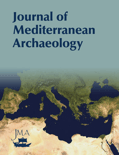
Journal of Mediterranean Archaeology
Discovering Hidden Histories of the MediterraneanThe Journal of Mediterranean Archaeology, published by EQUINOX PUBLISHING LTD in the United Kingdom, is a premier academic journal dedicated to the exploration and dissemination of knowledge within the vibrant field of Mediterranean archaeology. Established in 1988, this journal has consistently demonstrated its commitment to scholarly excellence, attaining a Q1 ranking in various categories, including Archaeology and Arts and Humanities, making it a vital resource for researchers and students alike. With a prominent Scopus rank of #49 out of 413 in Archaeology, it places itself among the top-tier publications, reflecting its impact and relevance in contemporary archaeological discourse. Although the journal is not open access, its rigorous peer-review process ensures the publication of high-quality scholarly articles that contribute significantly to the understanding of the diverse cultural narratives within the Mediterranean region. As the journal moves toward its 35th anniversary, it continues to be a cornerstone for professionals seeking to share groundbreaking research and dialogue in this critically important area of study.

Journal of Ancient History and Archaeology
Unveiling the Secrets of Our PastJournal of Ancient History and Archaeology is a premier, open-access academic journal published by MEGA PUBLISHING HOUSE since 2014, dedicated to exploring the rich tapestry of ancient civilizations and archaeological discoveries. With ISSN 2360-266X, this journal has made significant strides in the field, achieving elevated rankings across multiple categories, including Q1 in Classics and Q2 in History as of 2023. Positioned in Romania, the journal serves an international audience of researchers, professionals, and students who seek to disseminate and access influential scholarship in ancient history and archaeology. As a prominent resource within the Scopus rankings, it reflects a robust commitment to advancing knowledge through quality research, making it a vital platform for the sharing and discussion of innovative ideas and methodologies. The journal covers a wide array of topics related to ancient societies, enhancing our understanding of their cultural, historical, and archaeological significance.

Archeologia e Calcolatori
Pioneering Research in Archaeology and Computational TechniquesArcheologia e Calcolatori is a distinguished open-access journal published by EDIZIONI ALL INSEGNA GIGLIO SAS in collaboration with the Italian National Research Council, dedicated to advancing knowledge in the fields of archaeology and its intersections with computational methodologies. Since its inception in 1998, the journal has become a pivotal resource for researchers and practitioners, offering a platform for innovative studies and critical discussions at the forefront of archaeological science. With its current impact reflected in Scopus rankings, Archeologia e Calcolatori is placed in Q2 for both Archaeology and Archaeology (Arts and Humanities), and its commitment to quality scholarship is evident. The journal benefits from open access, ensuring that scholarly findings are readily available to a global audience. By prioritizing the dissemination of interdisciplinary research methods and explorative analyses, it aims to foster collaboration and inspire new directions in archaeological and computational research.

Studijne Zvesti Archeologickeho Ustavu Slovenskej Akademie Vied
Fostering interdisciplinary dialogue in the field of archaeology.Studijne Zvesti Archeologickeho Ustavu Slovenskej Akademie Vied is a leading journal in the field of archaeology, published by the SLOVENSKA AKAD VIED, ARCHEOLOGICKY USTAV, based in Nitra, Slovakia. This esteemed journal, with the ISSN 0560-2793, has established itself as a vital resource for scholars and researchers, reflecting significant academic contributions in both the arts and humanities as well as social sciences. With a 2023 Scopus ranking placing it in the second quartile (Q2) for archaeology, it showcases rigorous research and innovative methodologies, essential for advancing archaeological studies. While it is not an Open Access journal, it continues to offer valuable insights into archaeological findings, theoretical frameworks, and interdisciplinary approaches. The journal serves as a bridge, connecting local Slovak archaeology with international discourse, making it an indispensable tool for students, professionals, and academics striving for a deeper understanding of the archaeological heritage of Slovakia and beyond.

Data in Brief
Transforming Research Accessibility with Every Brief.Data in Brief is an esteemed open-access journal published by Elsevier that has been at the forefront of disseminating valuable and succinct research findings since its inception in 2014. With a focus on multidisciplinary and educational data, the journal serves as a vital platform for researchers, professionals, and students seeking quick access to high-quality data papers that complement larger research articles. Notably, Data in Brief holds a commendable rank of #40 out of 171 in the multidisciplinary category, placing it in the 76th percentile, which underscores its relevance and impact within the academic community. Operating with an open-access model, it ensures that research is readily available to a global audience, facilitating collaboration and innovation across various fields. The journal's commitment to providing a rich repository of easily digestible data makes it an essential resource for anyone interested in enhancing their research or knowledge base.

Yorkshire Archaeological Journal
Delving into the Past: Yorkshire's Archaeological InsightsYorkshire Archaeological Journal, published by Routledge Journals, Taylor & Francis Ltd, stands as a pivotal resource in the field of archaeology, particularly focused on the rich heritage and archaeological research within the Yorkshire region of the United Kingdom. With a dedicated ISSN of 0084-4276 and an E-ISSN of 2045-0664, this journal provides both researchers and practitioners valuable insights into archaeological discoveries, methodologies, and theoretical frameworks. While it holds a Q3 ranking in both Archaeology (Arts and Humanities) and Archaeology (Social Sciences), its contributions remain significant for advancing discussions and knowledge within the discipline. The journal's archival depth, converging from as early as 1980 and continuing robustly into 2024, showcases a commitment to fostering academic discourse and exploration of archaeological heritage. Although it does not currently offer open access, its rigorous peer-reviewed articles make it an essential reference for academics, professionals, and students alike who are eager to deepen their understanding of archaeology and its applications.
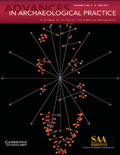
Advances in Archaeological Practice
Pioneering Insights for the Archaeological CommunityAdvances in Archaeological Practice, published by Cambridge University Press, is a leading journal in the field of archaeology, emphasizing innovative approaches and methodologies that advance archaeological research. With an ISSN of 2326-3768 and a commendable Q1 ranking in both the Arts and Humanities and Social Sciences categories, the journal effectively bridges theoretical perspectives and practical applications, positioning itself at the forefront of archaeological scholarship. Researchers and professionals can benefit from its high-impact content, reflected in its 93rd percentile ranking in the field, making it an essential resource for those aiming to stay abreast of the latest insights and practices. Although it operates under a subscription model, the quality and relevance of its publications ensure it plays a crucial role in shaping the discourse within the archaeological community and beyond, facilitating access to cutting-edge research that enhances our understanding of past human activities.

SOUTH AFRICAN ARCHAEOLOGICAL BULLETIN
Pioneering Discussions in Archaeology and Heritage.Welcome to the SOUTH AFRICAN ARCHAEOLOGICAL BULLETIN, a premier academic journal dedicated to the dynamic field of archaeology in South Africa and beyond. Published by the SOUTH AFRICAN ARCHAEOLOGICAL SOC, this journal boasts an impressive Q1 ranking in both Archaeology (arts and humanities) and Archaeology categories as of 2023, placing it among the top tier of scientific journals in its discipline. With an extensive publication history spanning from 2002 to 2023, it serves as a crucial platform for disseminating pioneering research and scholarly discussions that illuminate the rich tapestry of South African archaeological heritage. Although it does not currently offer open access, the journal’s rigorous peer-review process, combined with its standing in the Scopus rankings—where it ranks 78 out of 413 in the arts and humanities and 75 out of 354 in social sciences—underscores its commitment to academic excellence. Researchers, professionals, and students alike will find this journal an essential resource for exploring innovative methodologies, archaeological discoveries, and theoretical advancements shaping the understanding of human history.